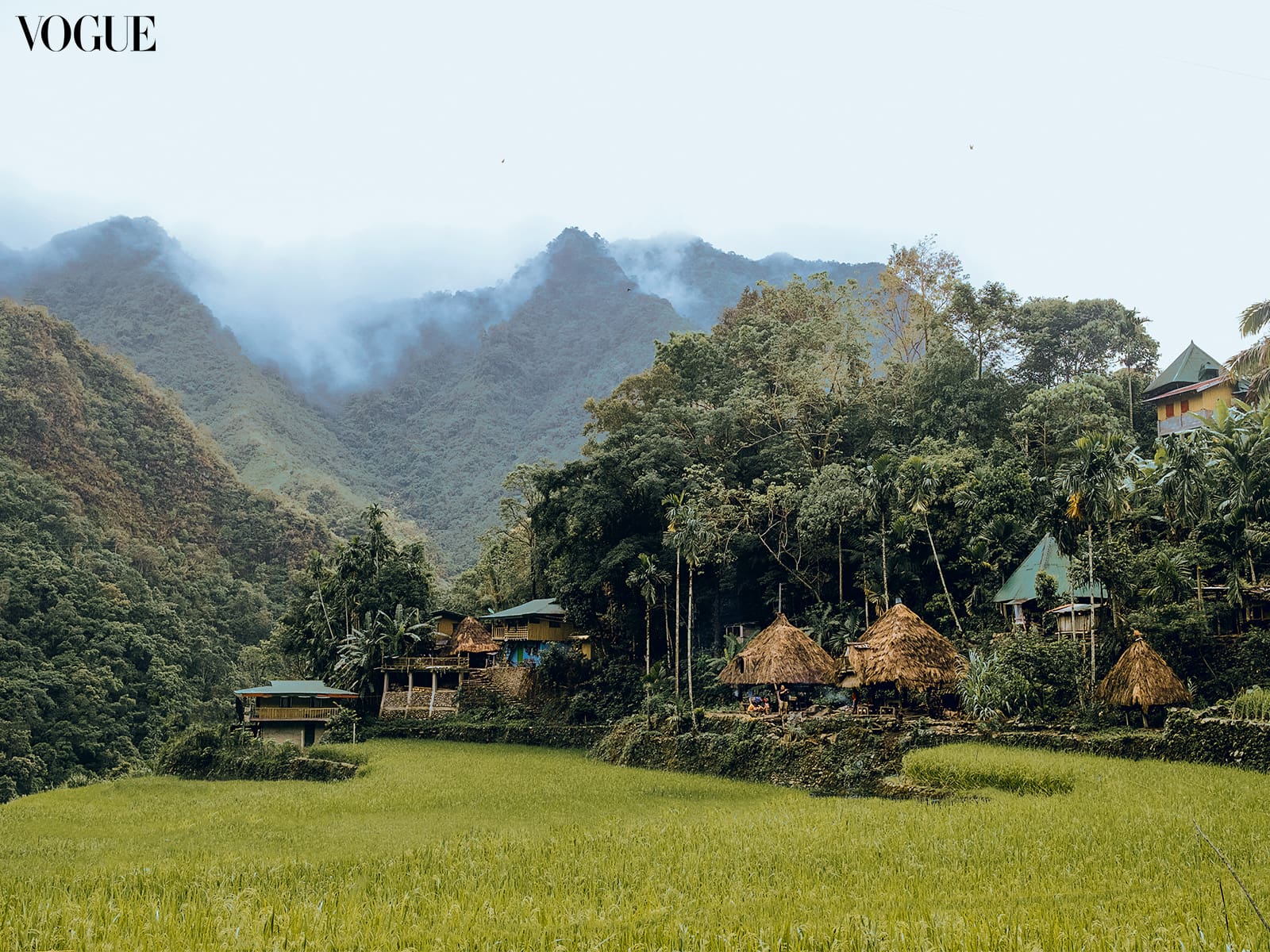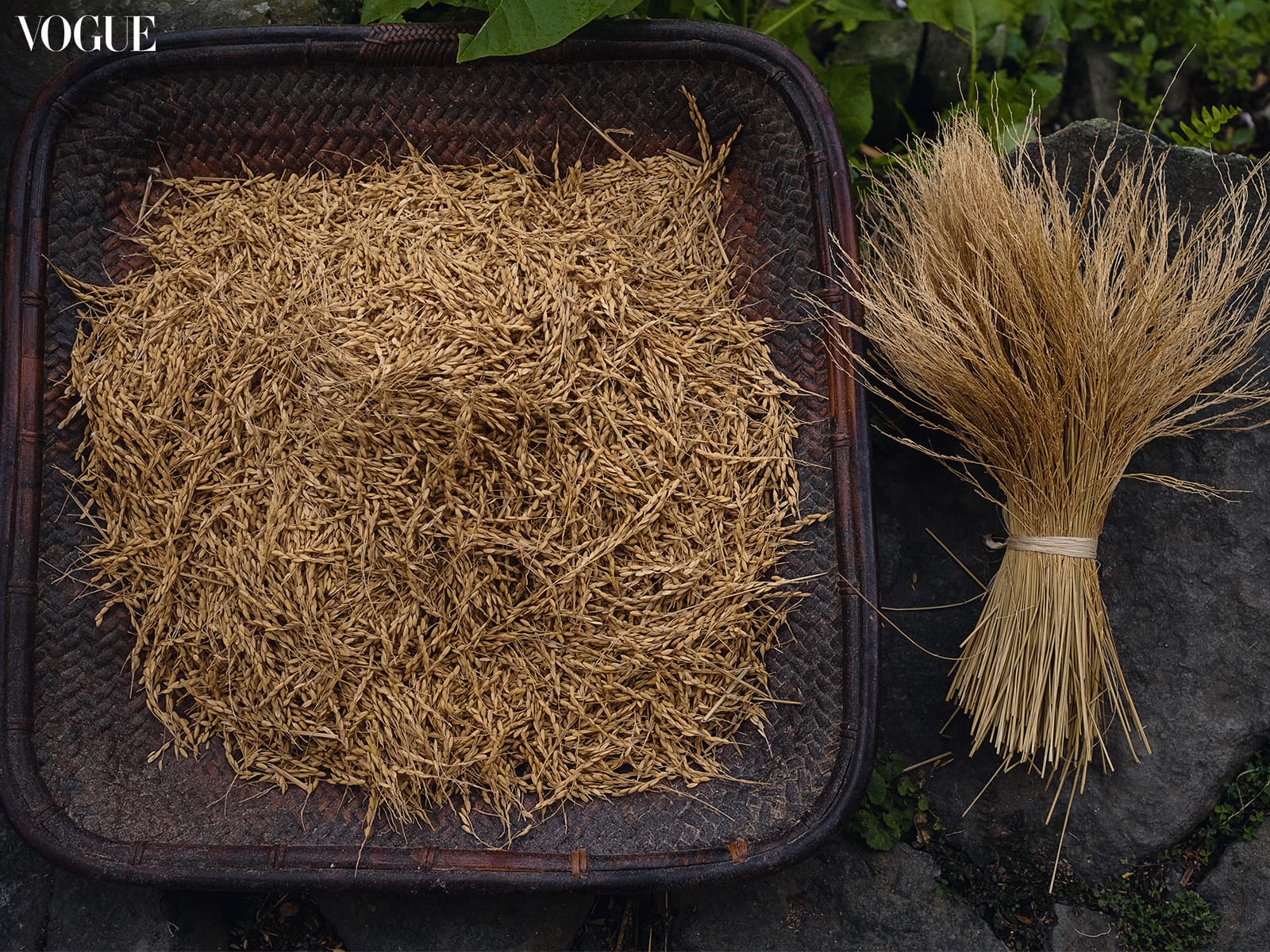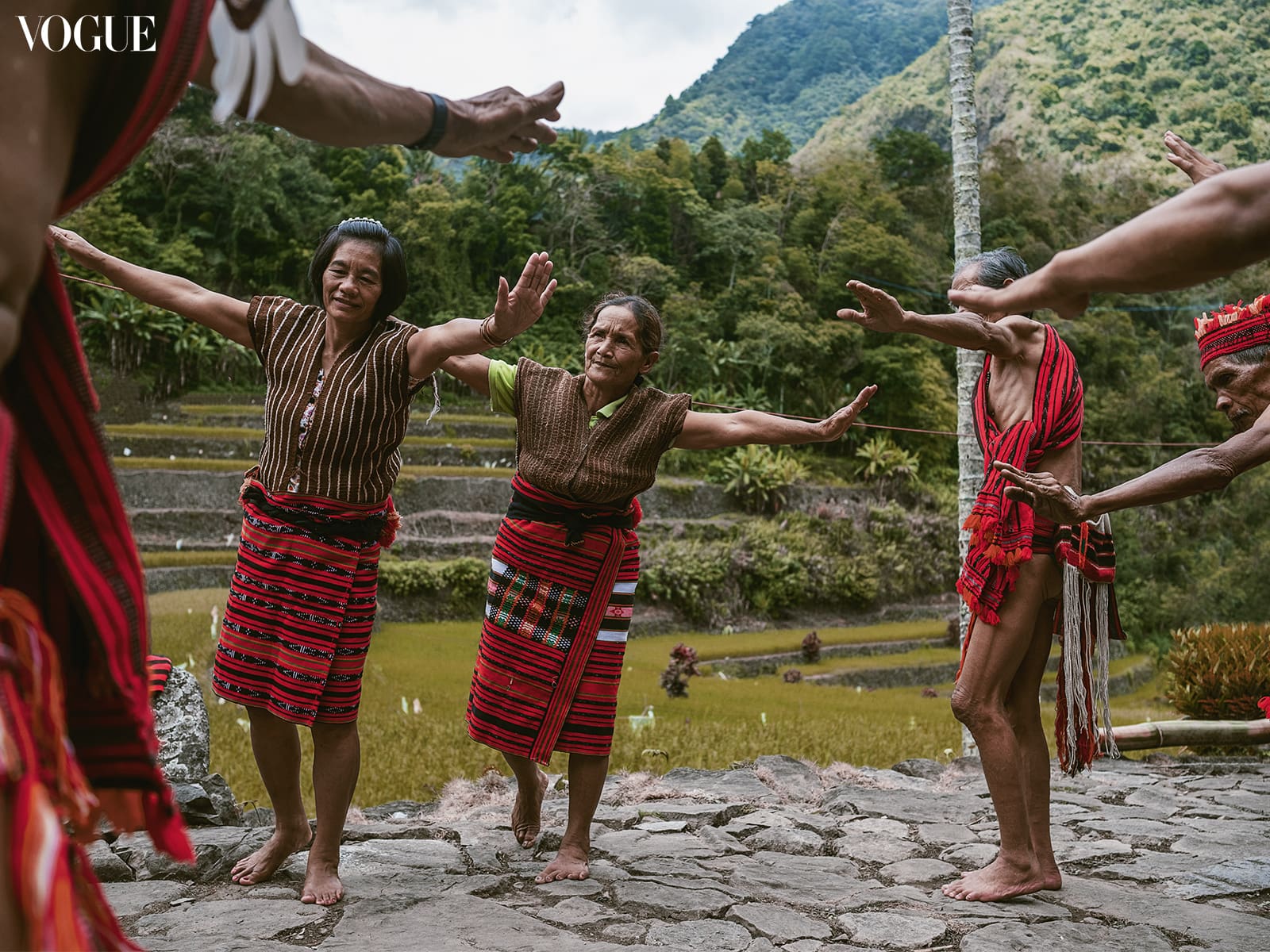Photo by Geela Garcia
A project restoring the traditional baluy of Ifugao seeks to preserve culture and redefine tourism.
The Pahang, an indigenous Ifugao house blessing ritual, was supposed to start before sunrise. But it has already been hours since the sun has risen, yet the mumba’ih (Ifugao shaman) and fellow elders tasked to perform the ritual still haven’t arrived. In Ifugao culture, these shaman are the Ifugao peoples’ human connection to their spiritual world. They preside over rituals to speak to spirits and their ancestors.
Three hours later, a frail old man walked down the lush green rice terraces. He is Appo Buy-a, the last mumba’ih of Batad.
Pio Mannod, the owner of the traditional house where the ritual was to be performed, said that the Pahang is ideally done every three years. But because there were fewer people inclined to keep this spiritual tradition, it occurred less and less. That day, the ritual didn’t begin on time because fewer available elders could perform it.

The ritual begins inside the traditional home to be blessed and the elders call upon the names of their ancestors to recite their genealogy. It is followed by an incantation of prayers and drinking of lipog, their smoky rice wine. After the wine is shared, the elders come out of the house and chant more prayers along with the reenactment of their legends through dance. The ritual culminates with the slaughter of three pigs.
“I feel sad because no one will be continuing our spiritual traditions anymore,” Appo Buy-a said through a translator. “Now nobody wants to be a mumba’ih because most of the people changed religions since Christianity entered our villages. Even my foster child is a leader of a Christian church, I wasn’t able to pass on what I know,” he said.
Mannod’s house is one of the few remaining traditional houses in Batad. He maintained the structure by offering it as a homestay since 2008 through the Batad Kadangyan Ethnic Lodges Project.
Material Culture
University of the Philippines assistant professor Raymond Macapagal, who has been integrating and researching in Batad for over 15 years, devised the project for local farmers, who made and maintained the rice terraces to directly benefit from tourism, since usually only outsiders earn from the tourism system.
They first visited Batad in 2005, and on their return, they stayed in the traditional house of Ramon Binalit which they later helped restore as per the owner’s request.
“To make it economically sustainable, I recommended them to host tourists so that they can have the extra income to maintain the houses,” said Macapagal.

Macapagal and his best friend Raoul Bermejo have so far aided in the restoration of over 12 houses. For the two, it was essential to restore the dilapidated houses because they are material evidence of Philippine culture and heritage.
“Ifugao traditional houses are significant in maintaining the rice terraces because they serve as rice granaries and are attuned to the Ifugao rice planting culture,” explained Bermejo. “It is divided into three layers, the bottommost part stands on stilts to prevent pests from entering the house. Down below, livestock animals such as chickens are sheltered.”
As one climbs the ladder, he enters the second layer of the house which is the dwelling place of the family. Inside is a cooking hearth that smokes up to help preserve the rice, and at the very top of the house is the rice granary, where harvested rice is stored, and is guarded by a bulul or a rice guardian.
An Ifugao house is made of various types of wood harvested from surrounding forests. Its thick roof is woven using cogon and reeds, which help regulate the temperature of the house.
Because of changes in climate and vegetation, it has been increasingly difficult for the people of Batad to harvest the original materials they use to build houses. Locals have been using galvanized iron sheets because they are cheaper and readily available compared to cogon thatch.
Macapagal and Bermejo are concerned that what may be getting lost through this shift is the vast knowledge and practices of Indigenous peoples.
“If we lose these homes, we may also lose the knowledge to weave those roofs, if we lose mumba’ih, we also lose these spiritual traditions such as the Pahang,” they said.
Redefining Tourism
Beverly Longid, Igorot and National Coordinator for Katribu Philippines, said that tourism must always be educational and developmental for it to be genuinely sustainable.
Longid is adamant about including education with tourism; despite the influx of tourism, conventional portrayals of Indigenous peoples as people belonging to the past still exist. Some tourists would treat locals only as exoticized subjects for photographs.

“Like any other Filipino or members of the wider society, Indigenous peoples also watch television, wear watches, and use cell phones. We are not in isolation, and we shouldn’t be preserved to remain before colonization because we also develop as the world changes.”
Longid added that people’s concept of tourism should also be redefined, and it must serve the community beyond a livelihood.
It’s also important to highlight how we came to have those landscapes without romanticizing them. “We have the rice terraces because of the ingenuity of the Indigenous peoples and because they defended them from destructive projects such as dams and large-scale mining,” said Longid.
“Our culture and indigenous attire are not just “beautiful,” our songs and dances have roots where these came from. All emanate from our connection to our land,” she explains.
“In engaging with tourism, we should always redefine concepts to ensure it benefits the people. I’ve seen this type of people-centered tourism in Latin America, where the community discusses their problems and alternatives. They have a say in tourism policies. Culture is always evolving, it is not static, and it is created and preserved not by a single person but by a community.”
For now, the ethnic lodges project aims to contribute to the economic empowerment of the locals and the preservation of the material culture of Batad. Macapagal also harnesses the project to initiate educational tours with their students and networks, especially architects who may learn from the Ifugao traditional houses.
Back in Batad, the Pahang ends. The choicest cuts from the ritually slaughtered pigs have been boiled for the community to partake in a feast, while the remaining uncooked meat was distributed as gwanah, for guests to take home to their families. The people of Batad celebrate with a dance, and Appo Buy-a hikes up to return to his home above the terraces.
